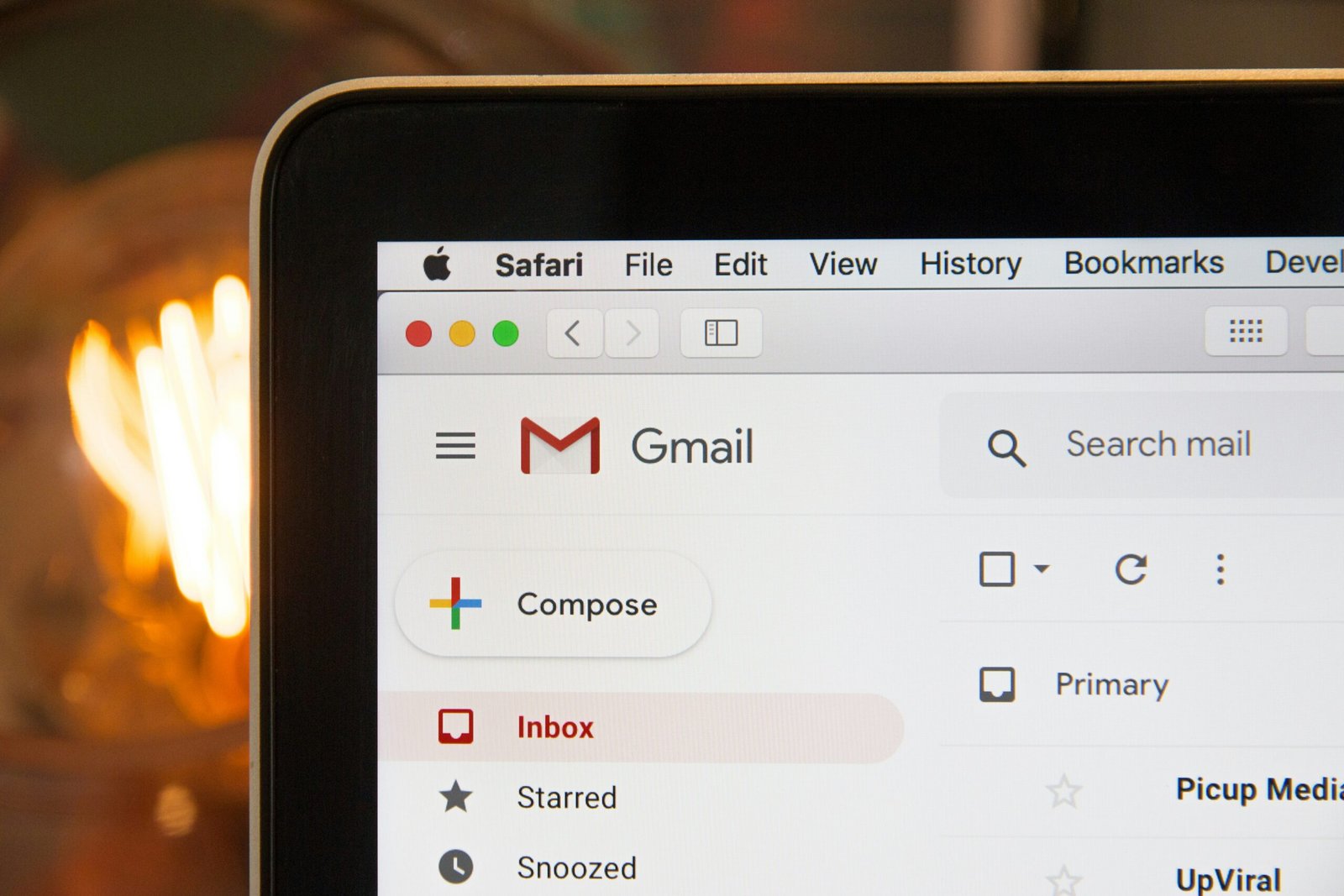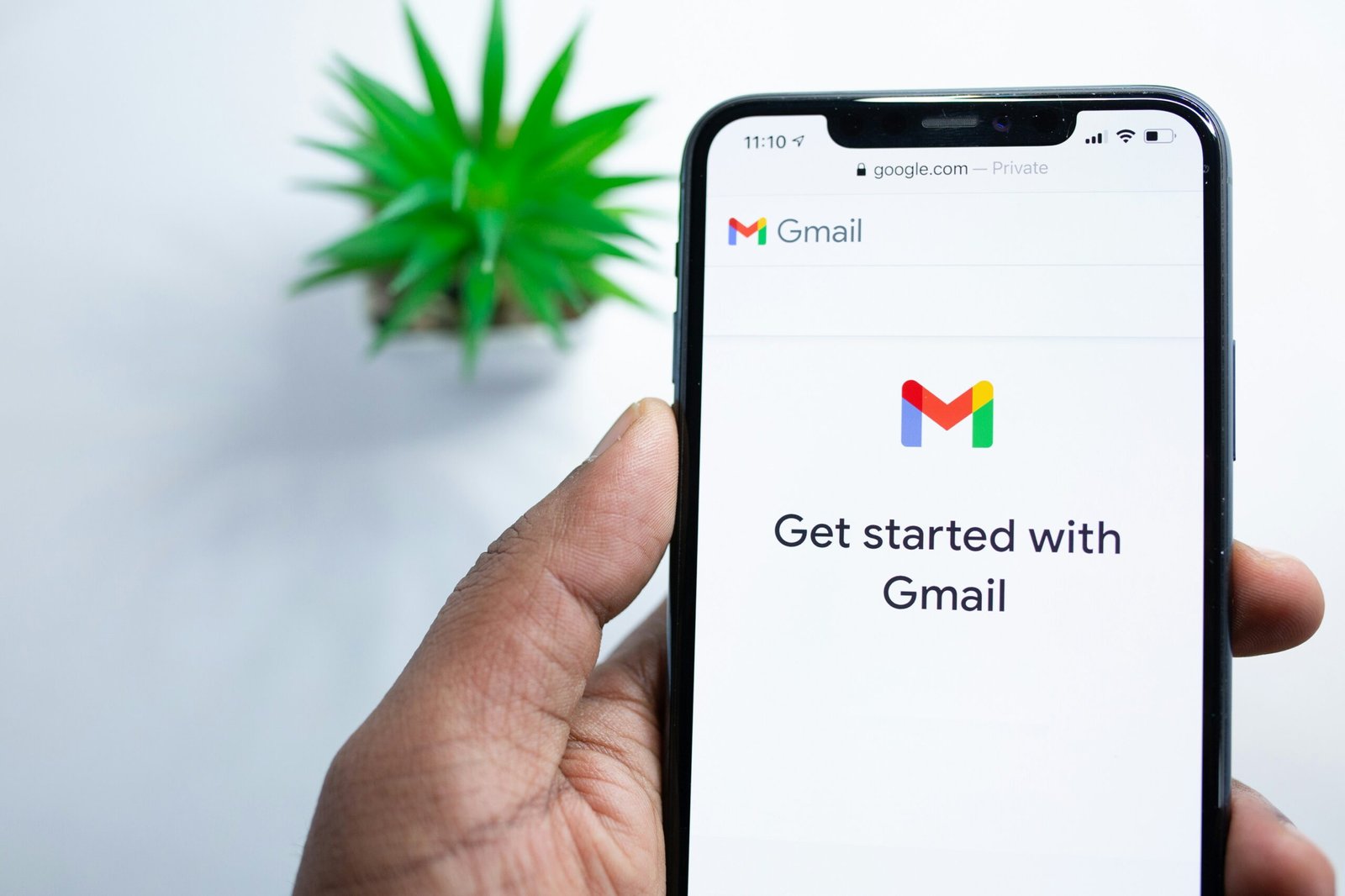Maximizing Growth: Leveraging Paid Media Campaigns for SaaS Success
Understanding Paid Media Campaigns
Paid media campaigns are strategic marketing initiatives that involve investing in online advertising to promote a product or service. Within the Software as a Service (SaaS) ecosystem, these campaigns serve a critical purpose; they are designed to drive targeted traffic, enhance brand visibility, and ultimately, generate qualified leads. By leveraging various channels, SaaS companies can effectively reach potential customers who are actively searching for solutions to their challenges.
There are several forms of paid media that organizations can utilize, each offering distinct advantages depending on the target audience and marketing objectives. One prevalent option is pay-per-click (PPC) advertising, where advertisers pay a fee each time a user clicks on their ads. This model is particularly advantageous for SaaS businesses, as it allows them to gain immediate visibility in search engine results and engage users who have expressed interest in relevant keywords.
Another effective form of paid media is social media advertising. Platforms such as Facebook, LinkedIn, and Twitter provide advanced targeting capabilities, enabling SaaS companies to reach specific demographics, industries, and interests. Given the propensity of users to engage with brands on these platforms, social media ads can enhance brand recognition and foster user interaction, which is essential for user acquisition.
Additionally, display advertising plays a vital role in the marketing landscape, consisting of visual ads that appear on various websites and platforms. This type of advertising can increase brand awareness and attract potential customers as they browse the web, positioning the SaaS solution in front of a broader audience. All these methods contribute significantly to lead generation and build a strong foundation for sustained growth within the competitive SaaS market.
Why Paid Media is Crucial for SaaS Companies
In the competitive landscape of Software as a Service (SaaS), companies frequently encounter challenges when attempting to achieve organic growth, particularly in the early stages of their development. These challenges often stem from limited brand recognition and a nascent customer base, where establishing a strong online presence is crucial. Paid media campaigns can serve as a strategic tool to address these initial hurdles, providing immediate visibility and significantly enhancing customer acquisition efforts.
One of the primary advantages of paid media for SaaS companies is the ability to generate targeted traffic quickly. Unlike organic approaches, which may take months to yield results, paid media advertising channels, such as Google Ads or social media platforms, allow for immediate outreach. This dynamic can be particularly beneficial for new SaaS companies looking to establish themselves in a crowded market. By investing in paid media, companies can reach specific demographics and tailor their messaging to resonate with potential customers, thus maximizing the chances of conversion.
Furthermore, paid media campaigns can be optimized in real-time based on performance data. This agility allows SaaS companies to test various marketing strategies, assess which messages or platforms yield the best results, and refine their campaigns accordingly. The insights gained can drive not only customer acquisition strategies but also influence product development based on the preferences and behaviors of potential users.
Additionally, leveraging paid media facilitates the building of brand awareness and credibility. As potential customers are exposed to consistent marketing efforts across different platforms, they begin to associate the SaaS brand with reliability and innovation. Ultimately, this creates a foundation for long-term customer loyalty and retention. In essence, for SaaS companies aiming for rapid growth, investing in paid media is not merely beneficial; it is an essential component of a comprehensive marketing strategy.
Targeting Your Ideal Audience with Precision
In the realm of paid media campaigns, effective audience targeting stands as a cornerstone for achieving success, particularly for Software as a Service (SaaS) companies. Understanding the significance of identifying and reaching the right audience can dramatically influence campaign performance and overall business growth. To maximize the benefits of paid advertising, it is essential to employ targeted strategies that ensure marketing efforts reach the individuals most likely to convert into loyal customers.
The first step in audience targeting involves comprehensive market research. By utilizing tools such as customer surveys, existing user data, and competitive analysis, businesses can create detailed buyer personas that encapsulate the characteristics of their ideal customers. This process not only enables marketers to understand demographics like age, gender, and location but also helps identify psychographic factors such as interests, pain points, and buying behaviors.
Digital platforms provide advanced targeting capabilities that can be leveraged to refine audience outreach further. For instance, social media platforms offer insights into user behavior and preferences, allowing advertisers to target their campaigns based on specific criteria. With tools like Facebook Ads Manager or LinkedIn Campaign Manager, SaaS businesses can maintain tight control over who sees their ads, ensuring that they connect with potential customers who have a genuine interest in their services.
Moreover, utilizing analytics tools can enhance the targeting process by continuously tracking performance metrics. By analyzing engagement rates, click-through rates (CTR), and conversion rates, adjustments can be made to who the campaign targets, optimizing for the best possible results. This iterative approach allows for real-time feedback, ensuring that marketing efforts remain aligned with the audience’s expectations and needs. Ultimately, utilizing precise targeting strategies in paid media campaigns can lead to higher engagement and improved conversion rates, driving sustainable growth for SaaS companies.
Crafting Compelling Ad Copy and Visuals
Creating compelling ad copy and visuals is essential for the success of paid media campaigns in the Software as a Service (SaaS) sector. Effective advertising requires a deep understanding of the target audience and an ability to communicate value concisely. The ad copy should focus on crafting relatable messages that highlight the benefits and features of the SaaS product, directly addressing potential leads’ pain points. By doing so, businesses can subtly influence consumer behavior and prompt immediate action.
Psychological principles play a crucial role in the effectiveness of ad copy. Urgency and exclusivity are key elements that can enhance engagement. Phrases such as “limited time offer” or “exclusive access” evoke a sense of urgency and encourage prospects to take action before missing out. Additionally, incorporating strong calls to action (CTAs) is vital. CTAs should be clear and compelling, guiding users toward the desired action, whether it is to sign up for a demo, download a whitepaper, or start a free trial.
Visuals also hold significant importance in advertising. The imagery used must resonate with the target audience and complement the written message. High-quality visuals create a professional impression, while images or graphics that represent the product usage or customer experiences can establish credibility and relatability. It is beneficial to test different ad formats, including static images, videos, and animations, to determine which performs best for specific target segments.
Finally, the iterative process of testing and refining ad copy and visuals cannot be overlooked. A/B testing various elements can provide valuable insights into what resonates with the audience. Analyzing performance metrics such as click-through rates and conversions helps inform future campaigns and ensures continual improvement in crafting compelling advertisements that drive SaaS success.
Choosing the Right Platforms for Your Campaign
When it comes to maximizing the effectiveness of paid media campaigns for Software as a Service (SaaS) companies, selecting the right platforms is paramount. Each platform offers distinct advantages that can align closely with your target audience and specific campaign objectives. An initial assessment of the demographics and behaviors of your audience is essential as it informs which platforms are most suitable for your advertising efforts.
Google Ads is a powerful tool for SaaS businesses. It allows you to reach potential customers actively searching for solutions you offer. With its extensive reach and ability to target keywords relevant to your service, Google Ads can generate highly qualified leads. It is especially effective for SaaS products that fulfill specific user needs, making users likely to convert upon discovering your ad.
On the other hand, social media platforms like Facebook and Instagram offer unique opportunities for engagement and brand awareness. These platforms boast vast user bases and sophisticated targeting options, including interests and behaviors. For SaaS companies, these platforms can foster community building and customer loyalty. Facebook, with its diverse audience, can be particularly effective for B2C SaaS products, while Instagram may suit visually appealing offerings or content-rich applications.
LinkedIn stands out when targeting B2B customers. It is the go-to platform for reaching professionals and decision-makers. The ability to tailor your message to a business-centric audience makes LinkedIn an invaluable channel for SaaS companies that provide enterprise solutions. Sponsored content, InMail, and targeted ads on this channel can drive awareness and lead generation among business professionals.
Ultimately, the choice of platforms should align with your overall marketing objectives, budget for paid media campaigns, and content strategy. Therefore, conducting thorough research and analysis of each platform’s potential can facilitate a more informed selection that effectively reaches and engages your desired audience.
Budgeting for Paid Media Campaigns
Effective budgeting is a cornerstone of successful paid media campaigns, especially for Software as a Service (SaaS) companies seeking to maximize their growth potential. To begin, it is essential to determine a budget aligned with the company’s revenue and overall marketing goals. Companies should analyze historical financial data to estimate how much they can comfortably allocate without jeopardizing other critical operations.
Setting clear and measurable goals is also crucial in this budgeting process. For example, if a SaaS company aims to increase its user base or drive a specific number of sign-ups, the budget should reflect the cost-per-acquisition (CPA) benchmarks for the target audience. Establishing distinct campaign objectives allows for better tracking of performances and insights into the effectiveness of spent resources. Understanding the customer journey and the stages at which paid media will be employed can guide how much budget is thus allocated to each phase.
Another vital element in budgeting for paid media campaigns is analyzing potential returns on investment (ROI). Businesses should evaluate the anticipated returns based on various scenarios, factoring in projections of new subscriptions or upsells prompted by the campaigns. The application of robust analytics tools can support this evaluation, allowing estimation of the expected lifecycle value of customers procured through paid media initiatives. Monitoring performance metrics in real-time lets companies make data-driven adjustments to their budget allocations, ensuring that spending remains within feasible limits while optimizing outcomes.
In conclusion, careful budgeting for paid media campaigns not only fosters responsible financial management but also enhances the likelihood of achieving substantial growth in the competitive SaaS landscape. By assessing their financial position, setting clear objectives, and forecasting potential ROI, companies can navigate their paid media efforts effectively. By employing a thoughtful approach, businesses can optimize their spending and catalyze sustainable growth.
Measuring Success: Key Performance Indicators (KPIs)
For Software as a Service (SaaS) companies investing in paid media campaigns, understanding and tracking key performance indicators (KPIs) is crucial for measuring success. KPIs provide insights into how effectively a campaign meets its objectives and contributes to overall business growth. Among the most important KPIs are click-through rates (CTR), conversion rates, and customer acquisition cost (CAC). Each of these metrics plays a significant role in evaluating the performance of paid media efforts.
Click-through rate (CTR) is a critical metric that measures the percentage of users who engage with an ad and proceed to the landing page. A higher CTR indicates that the creative elements—such as messaging and visuals—are resonating with the target audience. Tracking CTR over time allows SaaS businesses to optimize ad copy and design, potentially increasing the effectiveness of future campaigns.
Conversion rate is another essential KPI that reflects the percentage of visitors who take a desired action, such as signing up for a free trial or making a purchase. By analyzing conversion rates, SaaS companies can assess the efficacy of their landing pages and overall user experience. A low conversion rate might suggest that the landing page content is not compelling enough or that the user journey is flawed, prompting the need for adjustments.
Lastly, customer acquisition cost (CAC) provides insight into the financial efficiency of paid media campaigns. This metric represents the total cost incurred to acquire a new customer, encompassing advertising spend, marketing expenses, and resource allocation. By regularly monitoring CAC, SaaS companies can determine whether their marketing efforts are sustainable and cost-effective in driving new customer growth. Understanding these KPIs enables SaaS businesses to make data-driven decisions, refine strategies, and enhance the return on investment of paid media campaigns.
The Role of A/B Testing in Campaign Optimization
A/B testing, also known as split testing, is a fundamental strategy in optimizing paid media campaigns for Software as a Service (SaaS) products. This method enables marketers to compare two or more variations of a campaign element to identify which performs better and thus drives higher conversions. One of the primary advantages of A/B testing is that it offers empirical evidence to guide decision-making, allowing teams to allocate resources more efficiently toward strategies that yield results.
To set up effective A/B tests, it is important to define clear objectives, such as increasing click-through rates (CTR) or improving conversion rates. Once goals have been established, marketers should choose specific elements to test. Common components include headlines, images, and call-to-action (CTA) buttons. For example, a vivid headline might attract more attention than a generic one, while a contrasting CTA button color could significantly enhance visibility and click rates. Testing multiple variations of each component allows for a more comprehensive understanding of what resonates with the audience.
The process of data analysis is crucial post-testing. Once tests are complete, the gathered data should be meticulously examined to identify patterns and trends. Metrics such as engagement rates, bounce rates, and overall conversion figures should be scrutinized to determine the effectiveness of each variation. This analysis not only highlights which elements should be retained or discarded in future campaigns but also offers insights into customer preferences and behaviors, potentially informing broader marketing strategies.
In conclusion, A/B testing serves as an invaluable tool for optimizing paid media campaigns in a SaaS context. It guides marketers in making informed decisions rooted in data while iteratively enhancing campaign performance. By focusing on key elements and leveraging thorough analysis, businesses can achieve sustainable growth and success in their marketing endeavors.
Case Studies: Successful SaaS Paid Media Campaigns
In the ever-evolving landscape of software as a service (SaaS), leveraging paid media campaigns has proven to be a critical strategy for driving customer acquisition and retention. Several prominent SaaS companies have executed successful paid media campaigns, utilizing a well-defined approach to achieve their objectives. This section outlines notable case studies that highlight effective strategies, challenges encountered, and the subsequent outcomes.
One exemplary case study is Slack, a cloud-based collaboration tool. Slack employed a multi-channel paid media approach, integrating search ads, social media platforms, and display advertising. By leveraging targeted messaging and a strong call-to-action, Slack successfully drove significant traffic to their website, resulting in a 40% increase in user signups during their campaign. The primary challenge faced was ensuring consistency in the brand message across various channels, which was addressed by implementing a robust communication plan among their marketing teams.
Another case worth mentioning is HubSpot, a marketing and sales software provider. HubSpot’s paid media campaign focused on educational content promotion, using pay-per-click (PPC) ads to drive users to valuable resources such as eBooks and webinars. This strategy not only generated leads but also established the brand as a thought leader in the industry. Despite facing competition in the crowded digital marketing landscape, HubSpot overcame this by continuously optimizing ad targeting and analyzing performance metrics to refine their messaging. The campaign led to a remarkable 60% growth in leads year-over-year.
A third notable example is Zoom, known for its video conferencing software. The company’s paid media campaign capitalized on the sudden surge in demand for remote communication tools. Zoom utilized targeted Facebook and LinkedIn ads to reach businesses transitioning to remote work. They effectively communicated the utility of their platform for both personal and professional use, resulting in a 300% increase in free trial signups. While maintaining scalability under increasing demand posed some challenges, Zoom’s agile approach allowed them to enhance server capacity rapidly.
Through these case studies, it is evident that successful SaaS paid media campaigns rely on well-coordinated strategies, continuous optimization, and adaptability to market trends. The insights drawn from these campaigns can serve as valuable lessons for other SaaS companies aspiring to enhance their paid media efforts.







